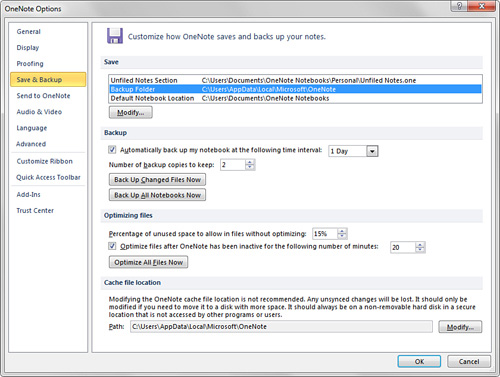Safety comes at the expense of the convenience. The task to support your more important electronic files is not any exception. If you choose the easy way while never not worrying with supports, you increase your possibilities considerably considerably disturbance when unthinkable happens one as an accident of hard drive disk drive. Such things occur without informing and never at the convenient hours.
The fallout from lost
and especially irreplaceable data can be enormously painful. In most
cases, people won’t even realize all that they’ve lost. Only as the
days, weeks, and months pass, whenever they desperately search for a
file they were sure they still had, will the damage become evident.
Data loss is the gift that keeps on giving—the gift that nobody wants.
Although backing up your computer is simply a good idea, doing so regularly is a great
one. It gives you a way of going back in time and restoring lost data
to the last time you backed up. The longer you wait to refresh your
backup, the more painful unexpected data loss will be. The more often
you back up your files, the less it will hurt when everything is lost.
Even if you’re not yet sold on backing up your
notes, I urge you to read on and at least let me introduce you to the
easy backup features that OneNote 2010 makes available to you. It’s
much less of a pain than you might think.
Selecting a Backup Location
Remember what I said about cheap little padlocks on
leather-bound journals and car alarms? They provide a false sense of
security. The same is true if you use the default location that OneNote 2010 selects for automatic backups. This is because OneNote’s backup
system defaults to the same drive on which you install OneNote itself,
which is also where you’ll typically create and store your notes.
The trouble with this is that, if your hard drive
crashes, not only your original notes will be lost, but your “backups”
as well. If you keep this configuration, you might as well not have
bothered with backups at all. Although keeping backups on the same
drive as your primary files does provide a handy way to undo damage
resulting from human errors, such as if you accidentally delete a
section you still needed, the real solution is to designate a location
other than your primary hard drive as OneNote’s backup folder. This
location could be another hard drive in your computer, an external hard
drive connected to your computer, or even a USB drive that you
temporarily connect to create a manual backup and which you then keep
in a safe location.
To select a folder that OneNote should use for backups, follow these steps:
1. | Click the File tab and then click Options.
|
2. | On the left side of the OneNote Options dialog box that appears, click the Save & Backup category (see Figure 1).

|
3. | On
the right side of the dialog box, under the Save heading, click the
second line in the list with the prefix “Backup Folder” and then click
the Modify button below it. |
4. | In
the Select Folder dialog box that opens, navigate to a location other
than your primary hard drive where OneNote should keep your backups. If
you want automatic backups to be saved here at regular intervals,
you’ll need to select a drive that’s always available, such as a second
or external hard drive, or a file share on your network to which you
have read and write access.
|
5. | If necessary, create a new folder called OneNote Backups at this new location and then navigate to it.
|
6. | Click
Select to accept the new location and close the Select Folder dialog
box. OneNote updates the Backup Folder path in the list with the new
location you specified.
|
7. | If
you want to save the new location, you must click OK at the bottom of
the OneNote Options dialog box. If you click Cancel, OneNote will
revert to the previous backup location.
|
After you’ve set a reliable (and preferably
permanent) secondary location as your backup folder, you can already
rest a bit easier. If you accept the factory settings, OneNote will now
create a backup of your open notebooks once every 24 hours and it will
keep two days’ worth of backups at any one time. After that, the oldest
backup will be overwritten with a fresh one. If this does not suit your
needs, you can easily adjust both the time interval for automatic
backups as well as the number of backup sets that OneNote should keep
on hand.